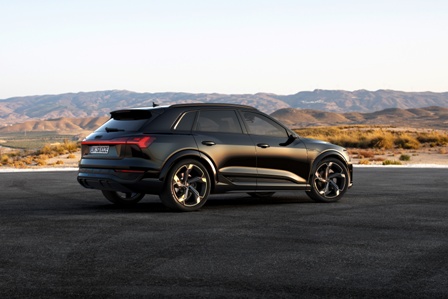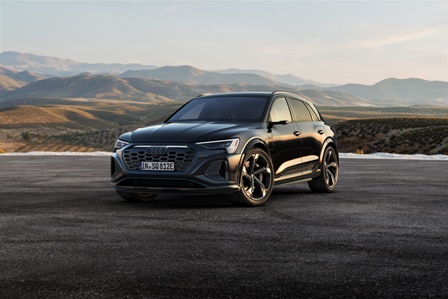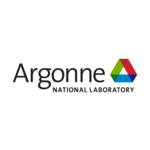London, 03 August, 2023, (Oilandgaspress) – The 2024 Audi SQ8 e-tron has arrived, adding an extra dose of performance to Audi’s flagship luxury electric SUV. Augmenting the sophisticated luxury and everyday usability found in the new Q8 e-tron, the SQ8 e-tron provides improved acceleration, increased handling dynamics, and elevated traction capabilities thanks to its three-motor quattro® drivetrain. The new model expands enthusiast appeal for an SUV already engineered to set benchmarks in seamless electrified vehicle ownership; making it the fully electric SUV for the customer that enjoys taking the winding road to their destination.
Three electric motors power the new Audi SQ8 e-tron and Audi SQ8 Sportback e-tron – one at the front axle and two positioned in the rear – offering 94 more horsepower and 228 more lb.-ft. of torque than the 2024 Q8 e-tron. The three motor drivetrain offers superior straight-line performance, along with improved dynamics and traction capabilities thanks to standard electric torque vectoring. The additional rear motor also increases the SQ8 e-tron’s peak output to 496 hp (370 kW) and 718 lb.-ft. of torque (973 Nm). In its boost mode, the 2024 Audi SQ8 e-tron can accelerate from 0 to 60 mph in as little as 4.2 seconds (0-100 km/h in only 4.6 seconds).
Desirable S design interior and exterior
The 2024 Audi SQ8 e-tron and SQ8 Sportback e-tron are immediately identifiable by distinctive silver rocker-panel accents and aluminum-look exterior mirror housings, matched by similar treatments on the front fascia and rear diffuser. When compared to the 2024 Q8 e-tron, the SQ8 e-tron is also differentiated by flared fenders that widen the body overall by 1.5 inches (39 mm).

Power and handling gains via three-motor setup
The drivetrain of the 2024 SQ8 e-tron features three electric motors that increase total power and torque, as well as add additional handling and traction capabilities, over the core Q8 e-tron. The front axle is driven by an asynchronous electric motor (when unpowered, asynchronous motors induce no drag, helping to improve efficiency), while the rear axle features two asynchronous electric motors that each power a rear wheel. In boost mode, the front-axle motor produces up to 210 hp (157 kW), and the two rear motors up to 185 hp (138 kW) each. Total boost power is limited to 496 hp (370 kW) by battery output, allowing the SUV to accelerate from 0 to 60 mph in as little as 4.2 seconds (0-100 km/h in only 4.6 seconds). Top speed is limited to 130 mph.
The two rear electric motors on the SQ8 e-tron also provide handling advantages over the single rear motor Q8 e-tron. Since there is no physical connection between the rear wheels (apart from their shared cooling system), the two electric motors can distribute drive torque to either wheel with complete variability, and do so in fractions of a second. Electric torque vectoring can direct drive force to the appropriate wheel in five milliseconds or less, an extremely low latency, responding around five times quicker than that of mechanical differentials.
When cornering at speed, distributing power so swiftly and effectively between the rear wheels eliminates the need for torque vectoring by braking to improve agility. When accelerating quickly out of a corner, the outside rear wheel can receive up to 162 lb.-ft. (220 Nm) more torque than the inside wheel. When multiplied by the electric motors’ gearing, this can equate to a difference at the wheels of around 1,550 lb.-ft. (2,100 Nm). The added torque sent to the outside wheel can help improve vehicle turn-in without the use of the brakes as in more conventional torque vectoring systems. As the SQ8 e-tron’s handling limit is approached, the unloaded inside front wheel is slowed slightly, helping make the SQ8’s handling both more agile and neutral, minimizing both oversteer and understeer conditions.
Intelligent driving aids, solid performance platform
Aided by an EV’s low center of gravity and tuned for optimized lateral dynamics, all SQ8 e-tron models benefit from Audi’s legendary quattro® all-wheel drive system, and are equipped with air-sprung, five-link, front and rear independent suspensions with electronic damper control. This permits the SQ8 e-tron to be configured for different road conditions, with a ride height adaptable by as much as 3.0 inches (76 mm) depending on the driving situation.

The four-stage electronic stabilization control (ESC) system in the SQ8 e-tron is fully integrated with the power electronics and electrified powertrain to help balance handling and control. Along with the normal driving mode, the ESC system offers sport and offroad modes. Driving characteristics can also be tuned via the standard Audi drive select dynamic handling system, permitting choices between seven pre-set profiles: auto, comfort, dynamic, efficiency, individual, allroad, and offroad.
Due to the location of the high-voltage battery, the SQ8 e-tron features an almost equal 50:50 weight distribution between the front and rear axles. The SQ8 e-tron’s body features a mixed steel/aluminum hybrid construction. Including the housing for the high-voltage battery, the aluminum content of the body is around 40 percent. The high-voltage battery and body form a strengthened hybrid structure, netting 45 percent greater torsional stiffness than a conventional internal-combustion SUV. This stiff construction pays off in better handling as well as reduced noise levels. The central components forming the core of the SQ8 e-tron’s passenger compartment – A- and B-pillars, roof members, center tunnel, interior sills, floor cross members, and rear longitudinal members – are all made of ultra-high-strength steel.
| Model | Motor/Battery | Drivetrain/Transmission | MSRP |
| 2024 SQ8 e-tron | Three asynchronous electric motors 114 kWh battery |
quattro® all-wheel drive Single-speed transmission |
$89,800* |
| 2024 SQ8 Sportback e-tron | Three asynchronous electric motors 114 kWh battery |
quattro® all-wheel drive Single-speed transmission |
$92,600* |
Information Source: Read More
Energy Monitors , Electric Power , Natural Gas , Oil , Climate , Renewable , Wind , Transition , LPG , Solar , Electric , Biomass , Sustainability , Oil Price , Electric Vehicles,


.jpg)
